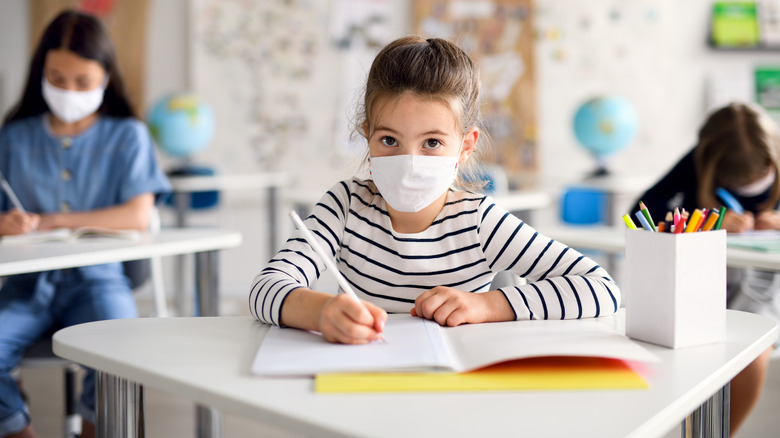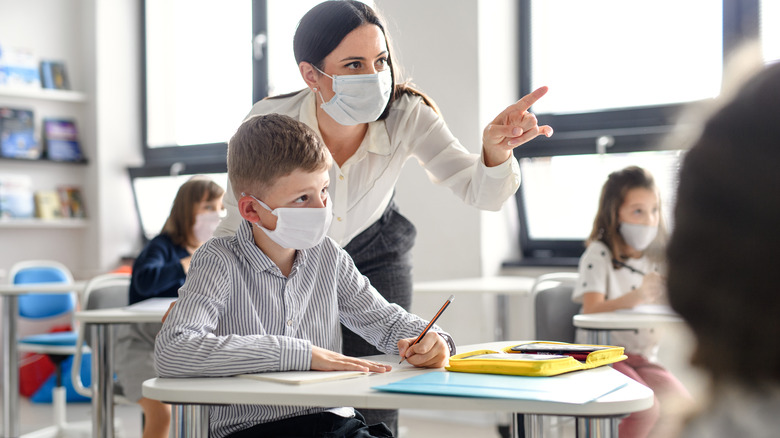Results Of New Study Make The Case For Mask Mandates In Schools To Prevent COVID-19
Mask mandates can help reduce the number of COVID-19 cases in schools, according to a new 2022 study published in The New England Journal of Medicine. Researchers studied COVID-19 infection rates in Boston-area school districts after officials lifted the statewide mask mandate in February 2022. Only two school districts in the area retained the masking requirement at the time (via Time).
After comparing the COVID-19 infection rates between both the masking and non-masking schools, researchers found that students were less likely to get COVID-19 in schools that still required them to wear masks, even though those school buildings were often crowded and in poor condition. The study revealed that 30% of all COVID-19 cases were due to the statewide mask mandate being lifted, which resulted in 17,500 missed school days among students and 6,500 days of staff absences. According to experts at Time, the study's findings are supported by previous evidence that mask policies can help cut down on the transmission of the disease.
Wearing a mask can keep children safe and in school
Dr. Julia Raifman, an assistant professor at the Boston University School of Public Health, told The New York Times that the study should help counter misinformation about the effectiveness of masking in schools, noting that many people were under the belief that either COVID-19 doesn't spread in schools or that wearing a mask cannot stop the spread of the virus, both of which are false. "This study shows that if people are wearing masks as a group, that it reduces transmission for everyone in the population, and it reduces school absences and teacher absences," Dr. Raifman said.
While the study doesn't specify which types of masks were worn by students, it suggests that any form of masking can offer some level of protection. As a result, health experts at The Washington Post say the study demonstrates that masks can have a significant impact on controlling the spread of COVID-19 and are a relatively easy and inexpensive way to help keep children safe and in school.


